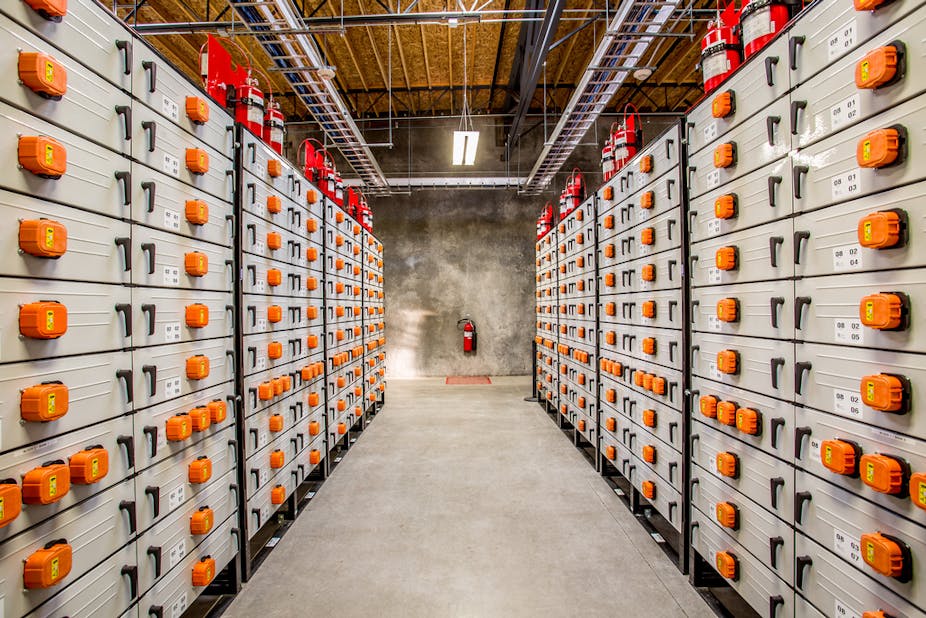There is a boom in renewable energy sources coming online worldwide, but the predominant types – solar and wind – are problematic due to their variable nature. For most regions of the world, the sun cannot be expected to shine nor the wind blow when required.
What is needed is a way to capture that energy when available, perhaps in the middle of the night, when demand is low, and then store it until it can be used when demand rises. But this is not a trivial problem to solve.
According to the European Wind Energy Association, at the end of 2013, the UK had 10.5GW of wind turbine capacity installed, with more in planning and construction. As the percentage of energy generated from renewables increases, the intermittency problem becomes more acute, as has been seen in countries like Germany or Ireland.
Germany, the country with the highest renewable capacity in Europe, has faced major technical problems due to the intermittency of renewable energy. The main issue is maintaining sufficient supply in the face of fluctuating levels of wind or sunshine. Back-up supply in the form of conventional power plants is required to meet demand. But as different types of power plant take time to come online – 48 hours for nuclear, 12 hours for coal-fired, down to a few hours for modern gas power plants, or ten seconds for the water released from a dam to start the turbines – having a back-up always available means having power plants running most of the time, which is inefficient and expensive.
Another problem is integrating renewable energy supplies into the high voltage electricity grid. For example, in Ireland given the fact that there is more wind at night when many businesses usage is low, a significant percentage of the energy produced may have been dumped, because the electricity produced cannot easily be transmitted across the grid.
So a means of storing energy is a vital part of any future energy system that includes a substantial amount of variable and uncontrollable renewable energy. Energy storage provides flexibility and reduces the need to rely on fossil fuel back-up power.
Lots of storage variety
Current energy storage technologies in use include direct electrical storage in batteries, thermal storage as hot water or in the fabric of buildings, using compressed air energy storage, or chemical storage (hydrogen). But identifying which approach is best is complex.
The right storage mix has to match the nature of the renewable energy source, the demands asked of the power grid, and the physical nature of the landscape and geology – as well as political and public opinion too. A lack of clear vision for energy storage means governments fail to adopt a joined-up approach.
…but too little in use
So while wind turbines and solar panels are blossoming under government programmes to support them, few governments recognise the importance of storage as the missing piece. In Japan, for instance, 15% of supplied electricity has been cycled through a storage facility, whereas in Europe it is closer to 10%, with Germany being the leading nation.
In Germany, authorities have opted for pumped hydro storage as an energy storage solution, and has built a regulatory framework around it. Current UK energy storage deployment consists of pumped hydro (3,000MW), batteries (10MW) and liquid air (0.3MW). The UK’s geography restricts the possibility for pumped hydro despite its appeal, and the same goes for compressed air storage. But the UK government’s current technology-neutral view runs the risk that some of the alternative technologies not yet ready for deployment will not have the support they need to develop in time to address the challenge they are required to meet. So the UK’s solutions could be limited to hydrogen storage, batteries, or liquid air.
Follow Japan’s lead
An analysis in 2012 indicated storage would have the greatest effect when deployed closest to demand. There may be a case for installing energy storage at the building level, in blocks of flats or residential areas, industrial estates or commercial districts – far more widely than at it is at present. In Japan, for example, sodium-sulfur batteries have been installed widely and successfully at the electricity distribution level, something that could be replicated in the UK. The Japanese government has also provided support for installing residential fuel cells in order to drive down prices. Between 2004 and 2008 prices dropped by 73%, and the installed base is increasing year on year – Japanese investment that the UK and others could capitalise on, and indeed, more international collaboration is needed.
With many storage technologies and varying applications, there is no single perfect storage technology that will suit all. But if we are to hang our low-carbon future on renewables like wind and solar, then governments need to focus on supporting industry to develop energy storage tech – or risk fossil fuel dependence for many decades hence.

